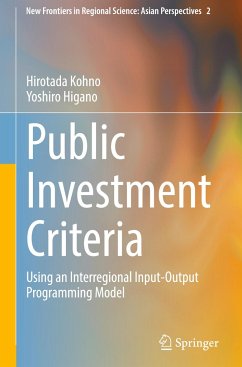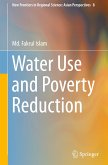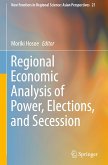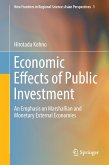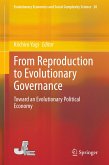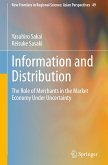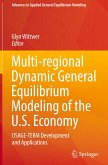This volume presents the most robust and useful methodology for the derivation of investment criteria for the evaluation and planning of public investment projects - public investment criteria. The methodological approach solves inherent defects of traditional methodology, namely an ad hoc application of the benefit-cost analysis in the static content.
Although this approach originated in the water resources development project of the Harvard group, the authors' methodology has achieved a discrete and dynamic inter regional input-output programming model by which: (i) establishment of priorities among potential investment targets by taking account of economic benefits that are brought by implementation of a set of selected projects, and diffusing into the whole national economy, and (ii) rational allocation of limited public funds to the selected investment projects are consistently made, based on the opportunity cost criteria in the dynamic content. As these benefits make up a source for the stream of further created capital funds for public as well as private sectors over the planning time horizon, optimal re-investment of thus created capital funds are solved recursively in the endogenous model by approaching the turnpike path of the whole national economy. As an optimal solution, the allocated levels for trunk expressway network as well as for other transport facilities, which are balanced with the allocation for industrial capital formation, are obtained by period and by region. In the background of these processes, the imputed price and opportunity costs as a sort of contemporary "god" are always latent.
Readers with basic mathematical knowledge will learn functional and practical meaning of the opportunity costs (and the imputed price) in the evaluation and planning of investment. Conquering this small obstacle will be a source of strong self-confidence for society, a worthwhile objective. Other applications of the methodology are also included in this book, which is helpful for practitioners frequently using the feasibility study method as well as experts who wish to understand the theoretical arguments related to public investment criteria. As one of the applications, there is a numerical solution of a composite transport system in which the amounts of roads, railways, and ports are derived quantitatively, not qualitatively. These are results of authentic public investment criteria that are built in the inter-regional input-output programing model.
Although this approach originated in the water resources development project of the Harvard group, the authors' methodology has achieved a discrete and dynamic inter regional input-output programming model by which: (i) establishment of priorities among potential investment targets by taking account of economic benefits that are brought by implementation of a set of selected projects, and diffusing into the whole national economy, and (ii) rational allocation of limited public funds to the selected investment projects are consistently made, based on the opportunity cost criteria in the dynamic content. As these benefits make up a source for the stream of further created capital funds for public as well as private sectors over the planning time horizon, optimal re-investment of thus created capital funds are solved recursively in the endogenous model by approaching the turnpike path of the whole national economy. As an optimal solution, the allocated levels for trunk expressway network as well as for other transport facilities, which are balanced with the allocation for industrial capital formation, are obtained by period and by region. In the background of these processes, the imputed price and opportunity costs as a sort of contemporary "god" are always latent.
Readers with basic mathematical knowledge will learn functional and practical meaning of the opportunity costs (and the imputed price) in the evaluation and planning of investment. Conquering this small obstacle will be a source of strong self-confidence for society, a worthwhile objective. Other applications of the methodology are also included in this book, which is helpful for practitioners frequently using the feasibility study method as well as experts who wish to understand the theoretical arguments related to public investment criteria. As one of the applications, there is a numerical solution of a composite transport system in which the amounts of roads, railways, and ports are derived quantitatively, not qualitatively. These are results of authentic public investment criteria that are built in the inter-regional input-output programing model.

